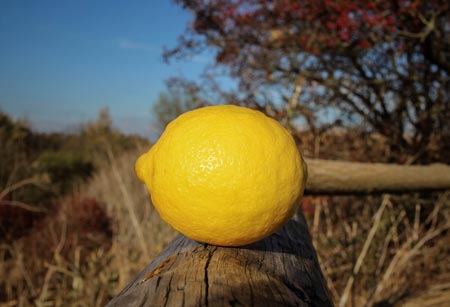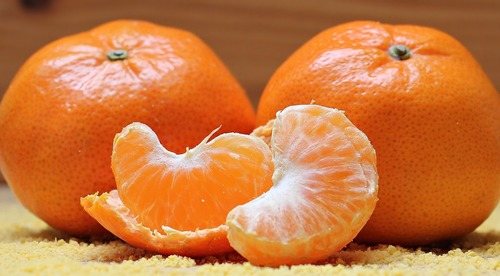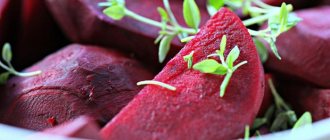The introduction of complementary foods is an extremely responsible event in which the problem of choosing appropriate products should be decided by parents according to clinical studies conducted by pediatric nutritionists. Orange is a healthy fruit, but it should be given to a child from a certain age. The specialist’s answer about exactly when this can be done is determined by several factors: the baby’s imperfect digestive system, the exotic origin of the fruit and its ability to cause allergic reactions.
- Reasons for restrictions
- Recommendations
Benefits for a growing body
These fruits contain a lot of vitamins, pectins, phytoncides, dietary fiber and fiber. These elements are required by the body for full development and growth. They help fight colds and flu and are needed for the full functioning of important body systems.
These fruits will help:
- Remove harmful substances from the growing body.
- Recover from a lack of nutrients.
- In the treatment of diseases of the respiratory system.
- Improve metabolic processes.
- To normalize appetite.
- Cleanse yourself from nitrites and nitrates.
Let's consider the advantages of individual types of this category of fruits and their beneficial properties for the child's body.
Tangerines
Tangerines have a high content of ascorbic acid. They also contain vitamins of different groups, calcium, potassium, essential oils and a number of other important minerals. They can prevent various heart diseases and increase blood glucose levels. Positively affect the functioning of nerve cells.
Oranges
Oranges contain a lot of glucose, vitamin C and fructose, various compounds that are beneficial for children's bodies. Fresh fruit is rich in potassium and magnesium, phytoncides and citric acid. Regular consumption helps strengthen the immune system and normalize liver and heart function.
Lemon
Among all citrus fruits, lemon has a special place. Its distinctive feature is its sharply sour taste and particularly bright aroma. It is not for nothing that it is used as a flavoring in many dishes. It contains a huge amount of vitamin C. The fruit has antiviral and antibacterial properties thanks to the phytoncides contained in it. The pectins present in lemon have a good effect on intestinal motility.
The high content of nutrients in this fruit provides the body with powerful support for vitamin deficiency, especially in the autumn-spring period, when many children are weakened. Eating lemon will strengthen the cardiovascular system and give strength for full lipid metabolism. Citrus is successfully used for kidney or bladder stones, anemia, and poor absorption of iron and B vitamins.
Experts insist on consuming lemon if the child has chronic forms of pharyngitis or tonsillitis. Lemon is often used for antifungal therapy and stomatitis.
Photo: Miroslavik
A storehouse of vitamins and nutrients
In addition to the above vitamins, oranges contain the following beneficial substances:
- Fiber and pectin, which improve digestion and help cleanse the intestines.
- Phytoncides are special substances that normalize the internal environment and destroy bacteria harmful to the human body.
- Citric acid, which helps speed up metabolism.

Age and principle of introducing citrus fruits into the diet
Experts do not recommend citrus fruits for children under one year of age, since at such an early period it can provoke an allergic reaction. In addition, exotic types of fruits are quite heavy for an immature digestive system. The negative reaction becomes lower by the age of 3 years.
Also, in order to answer the question at what age it is better to introduce these types of fruits into a child’s diet, it is worth assessing his health status. If children have increased acidity or are allergic to citrus fruits, you should not even think about early introduction of these fruits into the diet.
General recommendations for introducing citrus fruits into a child’s diet:
- When introducing juice, it is recommended to dilute it with water 50/50 and give it after a meal, preferably in the morning.
- Carefully evaluate the body's reaction after eating the fruit for the first time.
- New foods should not be given during the same period so that the reaction to the new fruit can be assessed objectively.
Let's look at age and administration recommendations for specific citrus fruits.
At what age can you give your child an orange?
A nursing mother can start trying orange when her baby reaches 3 months of age, if there are no health problems. You should carefully monitor the baby’s body’s reaction in the coming hours after feeding. In the absence of external manifestations of allergies and tummy problems, you can eat half a fruit no more than 1-2 times a week.
A baby can eat orange on his own from the age of 9 months, however, many experts still do not recommend giving it before a year. Even if you decide to give your baby an orange before a year, it is better to do it for the first time in the morning, after breakfast, starting with a small piece of fruit, peeled and peeled. The whole fruit is allowed to be eaten no earlier than 5 years of age, and no more than a couple of times a week.
Children under one year old can drink orange juice in quantities of up to 50 milliliters. By school age, the portion is increased from 100 milliliters.
If there is an allergic reaction, the introduction of orange is postponed for at least 3 years.
At what age can you give your child tangerines?
A pressing question for parents, because the fruit is very popular in Russia, especially in the cold season. If the child has no health problems, you can try introducing tangerine into the menu for about a year. As is the case with oranges and many citrus fruits, if you have obvious allergic reactions, tangerines should not be tried before 3 years of age.
From what month can you give your baby lemon?
Lemon is not the best choice for babies. And this is despite the fact that it contains a huge amount of vitamins, and the fruits themselves are an excellent source of various fruit acids.
Many children find it difficult to perceive the sour taste of lemon, but the danger of early introduction into the diet lies precisely in the possibility of a severe rash appearing after the first tasting. And if a child is hypersensitive to new types of food, then the likelihood of negative consequences after eating lemon increases significantly.
When deciding how many months you can give your child lemon, remember that you should definitely wait until the age of two to introduce this type of fruit.
Some parents are impatient to start giving lemon to their child at an early age, despite the recommendations of experts. The earliest this can be done is 9-10 months. This is the period when the baby is already able to appreciate the sour taste and there is a chance that he will even like it.
Some parents try to give lemon juice to their baby from about six months of age. To neutralize the acid, a little sugar is added to it.
But no matter what age parents give their baby lemon to try for the first time, it is always necessary to carefully evaluate the body’s reaction to it. The first tasting should begin with a very small piece, and in the next few days you should not introduce any new products into the diet.
It is also worth noting that regardless of age, taking lemon for the first time may cause diaper rash and a rash around the mouth.

Photo: un-perfect
Where do we start?
Feeding with citrus should occur gradually. We recommend starting with tangerine juice and half water. After such a first acquaintance, carefully monitor the reaction. If everything went well, next time offer your child 1 cut piece of fruit.
If the baby’s teeth do not yet allow him to fully chew a tangerine, then show him how the pulp can be sucked and the excess fibers can be thrown away. Children often like this method the most, because it is the most delicious.
Children's dishes with citrus fruits
Many children love and consume citrus fruits in their usual form, enjoying the taste of peeled fruits. But there are children who have no contraindications for these vitamin-rich fruits to be present in their diet, and in their usual form the fruits do not arouse nutritional interest for them. Then parents begin to look for recipes and dishes in which they could add citrus fruits.
Tangerines and oranges are good to add to salads and various types of cereals. The juice that will certainly be released into the dish will give you a boost of energy and refreshment. And desserts with these fruits are always tasty and healthy.
From the age of 2, you can prepare salads from a mix of vegetables and fruits. Orange can be combined with chicken or fish. You can season this dish with butter, kefir or yogurt. Before serving, the peel of the fruit must be removed.
A variety of fruit jams are very popular. To prepare such a delicacy, you can use not only the pulp, but also the peel and zest. In jam, citrus fruits go well with a variety of berries and other types of fruit.
Candied citrus fruits are also an excellent alternative to classic sweets.
Orange desserts
A one-year-old child can start preparing delicious orange desserts. You don't have to add sugar to them. For children over 2 years of age, the dish can be sweetened. But remember that a child is allowed no more than 40 g of sugar per day. Here are several recipes for healthy and tasty desserts for children of different ages:
Pumpkin Casserole – ages 2+
- Grate 100 g of pumpkin and mix with finely chopped orange zest.
- Mix 250 g of cottage cheese, 100 g of sour cream, ¼ tbsp. semolina and 1 tbsp. l. sugar and yolk.
- Beat the whites into a strong foam. Mix the curd mass with the pumpkin-orange mixture and carefully fold in the protein foam.
- Place in a greased pan and bake for 30 minutes at 180 degrees.
Carrot-orange dessert - age from 1 year
- You will need two oranges, the pulp of which must be finely chopped.
- Grate two carrots on a fine grater.
- Mix some raisins and 150 g of sour cream.
- Add citrus and carrots to the mixture.
Fruit hedgehogs - age from 3 years
- Cut a small orange and tangerine in half and place on children's plates.
- Place grapes on toothpicks and stick them into the peel of the fruit so that you get small hedgehogs.
Ice cream with fruits - age from 3 years
- Wash and peel the kiwi and orange.
- Grind finely in a blender.
- Place in molds, insert sticks and place in freezer.
Contraindications
Citrus fruits should be consumed with extreme caution. This type of fruit in large quantities has a negative effect on the mucous membranes. And the sugar component has a bad effect on carbohydrate metabolism.
Citrus fruits are not allowed if there are:
- Stomach diseases, including ulcers, pancreatitis, gastritis.
- Diabetes.
- Allergic reactions to a specific species.
Use with great caution by women during breastfeeding, as the child may develop a rash or digestive upset.
Choosing the “right” oranges
There is a huge selection of citrus fruits on supermarket shelves. How to choose tasty, and most importantly, healthy fruits from such a variety?
- A “healthy” fruit, an orange or a tangerine, has three main characteristics: heavy weight, density (the fruit must be strong) and a delicate aroma.
- The bright yellow or even light red color of the peel is not an indicator of the taste of the fruit. Often fruits with a greenish tint have juicy and sweet flesh.
- The myth that the thicker the peel, the tastier the fruit, has long been dispelled. Thin-skinned oranges can be very sweet. The only disadvantage of such a peel is the difficulty of cleaning.
The benefits of oranges for children are undeniable. They are tasty and healthy. But every young mother should remember that citrus fruits are allowed to be introduced into the diet only in small portions. Overeating a product by a child can lead to serious allergic reactions and digestive system disorders.

Opinions differ about how many months from the start citrus fruits can be introduced into a child’s diet. Therefore, it would not be superfluous to consult with your treating pediatrician. Fruit allowed for consumption must be fully prepared for consumption.
On the eve of the New Year holidays, the domestic market welcomes exotic guests from warmer climes - bright orange fruits. In November-December, their mass collection begins, and throughout the long winter they will give us a special mood, enriching the diet with useful substances. Children are delighted with the citrus “sunshine”. And if you approach the first acquaintance correctly, if you take into account at what age a child can have an orange and in what quantity, then the joy will not be overshadowed by anything.
Photo: depositphotos.com. Author: volkovslava.
How to select and store
A ripe fruit is heavier than its green counterpart. Therefore, when choosing fruits in a store, first just take one of them in your hand. If the weight is sufficient, there is a high probability that it is ripe.
It is generally accepted that the sweetest fruits are those that are smaller in appearance. Citrus fruits have a fairly dense peel that can protect the fruit from nitrates getting inside. This is definitely a big plus. Hence the conclusion - we pay attention to the integrity of the “shell” of the fruit. There should be no dents, dark circles, or soft areas on it.
It is advisable to store citrus fruits in a cool place where there is not much light, at a temperature of 5 to 10 degrees. You can also choose a place for them in the vegetable compartment in the refrigerator, but not in a bag or closed “tray”. Most citrus fruits do not tolerate low temperatures well and are not stored for a long time. They can be kept in a room, but not more than 10 days.
Although you should be very careful when giving your child citrus fruits, do not exclude them without serious reasons. These amazing fruits will not only give you vitamins, but will also add cheerfulness and a festive mood to your everyday life.
Know the enemy by sight
The biggest concern mothers have with tangerines, and indeed with any citrus fruit, is their ability to cause allergies. But this is not a reason to deprive your baby of such delicious joy. If you introduce fruit into your child's diet step by step and observe the reaction, then everything should go well. But if the first symptoms of an allergy appear, take action immediately. Remember these “beacons” and be alert:
- A common symptom of allergies is skin rashes, most often on the wrists, buttocks and behind the ears.
- After the first test, a young child may experience redness on his cheeks and itching.
- Sometimes there is redness and swelling of the skin.
- A mucosal reaction is not uncommon; it manifests itself in swelling of the eyelids, tearfulness, redness and itching of the eyes.
- Sometimes a runny nose with nasal congestion may appear.
- The previous symptom sometimes causes a dry cough, laryngeal swelling and difficulty breathing.
- The child’s digestive tract may react to tangerine with abdominal pain, nausea, diarrhea, and sometimes colitis.

Knowledge of age restrictions, complementary feeding rules and allergy symptoms will guarantee that introducing your child to orange fruit will only cause positive emotions.
My son is 11 months old and he is so interested in tangerines. As soon as he sees it, he screams. But we don’t know whether it’s possible to give them to him. Tell me, at what age can a child eat tangerines?
Great question. Moreover, a series of New Year holidays is coming soon and every home will have these fruits. Today we will discuss at what age can a child have tangerines and how to give them correctly so as not to harm them.
Why is allergy to oranges common?
Despite all the splendor of oranges, a significant drawback - allergies - limits their use in childhood. The reason for the appearance of an inadequate reaction on the part of the body is caused by one or a combination of several factors:
- failure of the digestive system due to the age of the child (usually up to 3 years);
- hereditary predisposition, when parents have a confirmed allergy to fruit;
- a woman consuming large amounts of citrus fruits during pregnancy or breastfeeding;
- diseases of the gastrointestinal tract or autoimmune diseases that provoke an allergic reaction;
- unfavorable environmental conditions, aggravating the child’s immune status and contributing to the occurrence of food allergies.
Risk factors also include the “overseas” nature of the orange, which differs from locally grown fruits. It’s not for nothing that pediatricians and nutritionists insist that parents prepare a diet for their children from fruits that are familiar to their particular place of residence.
In what form should it be given?
Children enjoy eating this delicious fruit fresh. Adding it to porridge or salads makes dishes bright and more appetizing. Orange juice is valued for its refreshing effect and the long-lasting boost of energy it can give. And sweets containing these exotic fruits give children benefits and at the same time a lot of pleasure.
Orange juice
Lastly, citrus fruit juices are introduced into the child’s diet. Pediatricians recommend offering them to children at least 1.5 years of age, and better yet, upon reaching 3 years of age.
For children from 7 to 10 years old, the daily amount of the drink should not exceed 70-100 ml, for preschoolers - 30-50 ml.
- Orange juice must be diluted 1:1 with chilled boiled water.
- It will be beneficial if drunk 10-15 minutes after preparation during a meal or at the end of a meal, and not on an empty stomach.
- The drink will not come into contact with metal utensils and will retain more vitamins.
- Children's tooth enamel is sensitive to fruit acids, so after drinking the juice you need to rinse your mouth or drink a few sips of water.
Salad with oranges
From the age of 2, gastroenterologists advise diversifying the children's menu with fruit and vegetable salads. But if the dish is decorated with an orange, it is wiser to please the child at the age of 3, and not earlier.
The juicy and aromatic fruit perfectly complements salads with fresh fruits, cheese, vegetables, chicken fillet, and boiled fish. As a dressing, it is preferable to choose vegetable oils, kefir, yogurt, but in no case mayonnaise. For salad, the orange is thoroughly cleaned of peel, white fibers and films.
Jam and preserves
Sweet orange preparations are a celebration of taste and citrus aroma. All parts of the fruit are suitable for them: only the pulp or peel, zest or the whole fruit with skin. The delicacy can also combine other ingredients: berries, fruits and even individual vegetables (for example, pumpkin).
The faster the jam or jam is prepared, the more vitamins will be preserved. A spoonful of jam diluted with water will successfully replace store-bought juice as a homemade fruit drink.
Candied fruit
They provide a healthy alternative to candy for little ones with a sweet tooth. Orange peels contain a lot of phytoncides that suppress the growth and reproduction of viruses and bacteria, which is important during the period of “rampant” infections.
Candied fruits are added to porridges, desserts, or offered to children as an independent dish for dessert.
But the high content of carbohydrates (sugar) excludes them from the menu of diabetics and requires restrictions for overweight children.











